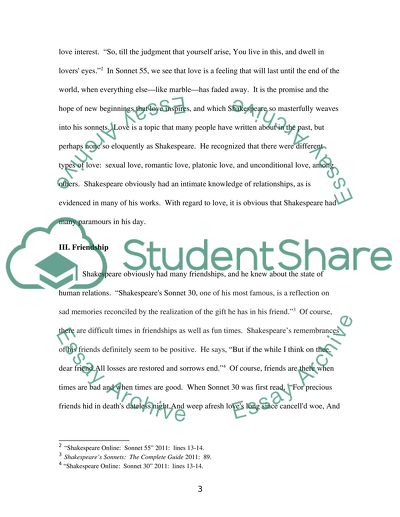Cite this document
(“The Themes of Love, Friendship, and Marriage Displayed in Shakespeares Book Report/Review”, n.d.)
The Themes of Love, Friendship, and Marriage Displayed in Shakespeares Book Report/Review. Retrieved from https://studentshare.org/social-science/1434440-the-themes-of-love-friendship-and-marriage-displayed-in-shakespeares-sonnets-30-55-and-116
The Themes of Love, Friendship, and Marriage Displayed in Shakespeares Book Report/Review. Retrieved from https://studentshare.org/social-science/1434440-the-themes-of-love-friendship-and-marriage-displayed-in-shakespeares-sonnets-30-55-and-116
(The Themes of Love, Friendship, and Marriage Displayed in Shakespeares Book Report/Review)
The Themes of Love, Friendship, and Marriage Displayed in Shakespeares Book Report/Review. https://studentshare.org/social-science/1434440-the-themes-of-love-friendship-and-marriage-displayed-in-shakespeares-sonnets-30-55-and-116.
The Themes of Love, Friendship, and Marriage Displayed in Shakespeares Book Report/Review. https://studentshare.org/social-science/1434440-the-themes-of-love-friendship-and-marriage-displayed-in-shakespeares-sonnets-30-55-and-116.
“The Themes of Love, Friendship, and Marriage Displayed in Shakespeares Book Report/Review”, n.d. https://studentshare.org/social-science/1434440-the-themes-of-love-friendship-and-marriage-displayed-in-shakespeares-sonnets-30-55-and-116.


